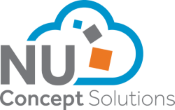NU Concept Blogs

How to Harness the Power of Analytics in Candidate Attraction
Improve your candidate attraction strategy through the use of people analytics...
In today’s competitive job market, attracting candidates is more important than ever. Post-pandemic, employers have more pressure than ever to fill new roles amid skills shortages in areas such as ERP implementations and digital transformation projects.
The People Analytics Market - Global Outlook & Forecast 2021-2026 reports that the people analytics market expects to reach $4.24 billion by 2026. And for good reason. By using analytics, HR, talent acquisition (TA) teams, and hiring managers can measure the effectiveness of their recruitment approach and make data-driven decisions.
What Is People Analytics?
People analytics is the collection and analysis of applicant data to understand, improve and optimise hiring outcomes. People analytics can provide real-time data and insights to help:
- source suitable applicants
- identify candidates
- predict staff turnover
- understand the candidate journey
- identify current and future skills gaps
- identify employees to be trained
- with diversity and inclusion (D&I)
- retain talent
How are businesses using people analytics?
Findings from SHRM, reveal that half (50%) of HR professionals use people analytics to assess the diversity of candidate pools. In their 2022 report, The Use of People Analytics in Human Resources, HR professionals who use people analytics for recruitment (recruitment analytics) said it helps them reduce potential bias in hiring decisions (42%). And 70% said it enables them to achieve workforce diversity and inclusion goals.
Data and Candidate Attraction
Recruitment analytics can help you attract skilled candidates. Attracting passive candidates is challenging, but data analytics can tell you where passive candidates learn about your job opportunities, e.g., through job boards, recruitment agencies, and social media channels.
Recruitment, Interviewing and Hiring
According to SHRM, 71% of hiring professionals use people analytics for recruitment, interviewing, and hiring. This can include using text “scrapers” to search keywords in CVs that match skills and qualifications. At later stages, computerised screening interviews can be analysed. This is where candidates provide answers to predetermined questions so that they can be scored and compared to other candidates.
Compensation, Benefits and Rewards
Over half (58%) of people who use analytics use it to compare their compensation and benefits packages with their competitors. In doing so, they can match or exceed competitor salaries and benefits. This is vital in the competition for skilled talent in areas like cloud migration and digital transformation recruiting.
Tools for Recruitment Analytics
There are tools to help firms incorporate analytics into their recruitment process. Automated systems can simplify the process of posting job openings on multiple sites and adapting job application forms. By tracking the source of every candidate, hiring managers can understand the return on investment (ROI.)
Deloitte’s Talent Acquisition Analytics framework helps recruiters understand recruiting analytics to support their decision-making and business strategies. Other tools available include:
- SourceFlow has built-in SEO for job advertising. It can increase the visibility of job listings.
- Textio is a tool that helps recruiters improve content by reducing biased language and increasing response rates. It uses natural language processing (NLP) to analyse and suggest improvements for your job descriptions.
- Hiretual is a tool that helps recruiters source candidates from different platforms, such as LinkedIn, GitHub, and Stack Overflow. It uses artificial intelligence (AI) to rank and match candidates to your job requirements.
Tips for Using Analytics in Candidate Attraction
- Track your candidate sources to gain a better understanding of which methods perform the best and increase or decrease spend and effort where necessary.
- Use the right channels to attract the best candidates. For example, your social media channels can help you reach new or passive candidates but a specialised recruitment agency, such as NU Concept Solutions can help you attract both active and passive, sought-after candidates.
- Collect data on your hiring process to improve the candidate experience. Identify pain points for candidates and create a more positive candidate experience.
- Record candidate conversion rates in each recruitment stage to help identify candidate engagement levels.
- Track metrics, such as your funnel, the quality of your talent pool, and D&I diversity to see how your recruiting strategy performs, and improve the hiring process.
Common metrics used in recruitment analytics
Several metrics measure the effectiveness of your recruitment approach. These include:
- Application completion rate: The % of candidates who complete the process.
- Applicants per opening: The number of applicants per job opening.
- Time to fill: The number of days it takes to find and hire a new candidate.
- Source of hire: The channel used to source a candidate.
- Quality of hire: The performance of new hires, measured by factors such as productivity, engagement, and retention.
- Cost per hire: The total cost of hiring divided by the number of hires.
- Acceptance rate: The % of candidates who accept offers.
- Funnel effectiveness: The effectiveness of the recruitment funnel in attracting candidates.
- Channel effectiveness and cost: The effectiveness and costs of different sourcing channels in attracting candidates.
Recruitment analytics is a powerful tool that can help attract the most skilled candidates for your roles. Using data and metrics, hiring managers can gain insights into their recruitment process and identify areas for improvement. In today’s world, the capacity to use and act upon data will determine who has the competitive advantage in recruiting top talent.
